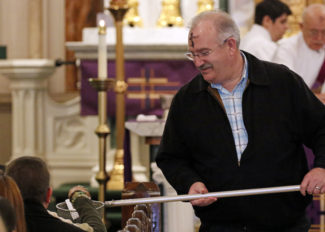
A few years back, I happened upon a YouTube video that stirred my heart like nothing I had ever seen. It featured a young Filipino woman who had been sponsored through an organization called Compassion International since the age of 5. From the other side of the world, a sponsor had sent a monthly gift to ensure she received medical care, food, and mentoring through a local church. Now an adult, the girl had been able to break out of the cycle of poverty and even attend college. As a surprise to both this young woman and her sponsor, Compassion arranged for the two of them to finally meet. Depicted in the video was an (understandably) emotional encounter that showed the enormity of blessing this relationship had brought to both women. I’m not a crier, but I found myself weeping at the beauty of how one life could touch another, even from halfway across the world.
It didn’t take much more convincing for me to want to sponsor a child through Compassion. To include our whole family in the charitable endeavor, I scoured the organization’s website with a singular goal: to find a boy with the exact same birthdate as my oldest son. Later, we sponsored two more children.
The effects of this commitment have been profound, both on our kids and (I can only hope) the children we sponsor in Ethiopia, Tanzania, and Indonesia. Our grade school-aged children have truly owned the project, to the point where it has become about much more than charitable giving. They pray daily for their brothers and sisters in the Third World, ask frequently about their lives, and delight in seeing their letters arrive in the mail.
RELATED: Why Do We Give Up Something for Lent?
The significance of our giving
These blessings do not come without a cost, however. The expense of sponsoring three kids’ care and religious formation adds up to a not-insignificant amount we could easily use to buy clothes for our own children, take our family out to dinner a couple of times, or pay a bill.
Still, I believe that our charitable giving is worth every penny. I not only see the way it has helped my children grow in empathy, but I have also come to trust that God’s promises about giving to others are true. In what is colloquially known as “God’s dare,” the Lord speaks of financial sacrifice in Malachi 3:10: “‘Put me to the test,’ says the Lord of Hosts, ‘And see if I do not open the floodgates of heaven for you and pour down upon you blessing without measure!’” Personal experience in both good times and bad has proven this reality. Over 13 years of marriage, even when saving for big purchases or dealing with unexpected bills, my husband and I have always been able to live on 90 percent of our income, giving away the other 10 percent. Our commitment to sponsor three kids in the Third World is now a part of that 10 percent—or sometimes (like during Lent) in addition to it.
RELATED: Video: Lent in 3 Minutes
The importance of sacrifice
Sacrificial giving is a significant part of worship and surrender all year round, but it takes on new meaning during Lent. Throughout these 40 days, we prepare our hearts to receive the ultimate gift of Christ’s sacrifice on the cross. The Church in its wisdom challenges us to do this by denying ourselves through sacrifices of time, worldly pleasures, and money. When we follow these practices, our souls resonate with the ever-giving, sacrificial nature of our savior.
Giving to a point of some discomfort—whatever that means for each of us—not only aligns us with our Lenten purpose but can also produce great personal growth. We awaken to our own ability to scale back. We realize that God’s provision is enough. And perhaps best of all, we see that, as Scripture promises, these small voluntary hardships are building our character, because “suffering produces perseverance; perseverance, character; and character, hope” (Romans 5:3-4).
If you make sacrificial giving part of your Lenten journey, take time to mindfully choose your recipient or cause. Consider your passions. Is there an area of injustice you long to make right or a specific group of people whose affliction breaks your heart? Where do you feel called to help those on the margins or join a fight with your finances? Websites like Charity Navigator can help you make sense of the many opportunities for giving. Through in-depth reports, this site rates various charities on qualities like accountability and transparency.
Alternatively, a cause for giving doesn’t have to be something big or organized. A friend or family member in need could benefit from your generosity. And your church can always use your financial gifts.
It’s up to you to decide whether your sacrificial giving continues beyond Easter. For our family, the joy of having three Compassion children in our lives is one worth maintaining year-round. You may find the same is true when you see the manifold blessings your financial sacrifice brings to others—and even to yourself.
Originally published February 14, 2018.